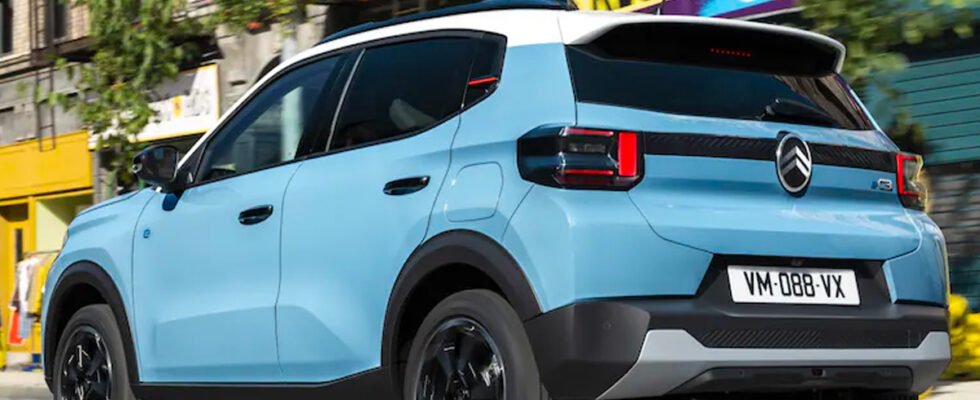Originally announced at 320 km, the maximum range of the Citroën ë-C3, the affordable electric SUV from the herringbone brand, has just increased to 300 km on the manufacturer’s official website. Problem is, this is not the only car from the Stellantis group to have reduced its autonomy.

Would Stellantis have been too optimistic about the maximum ranges of these new flagship electric vehicles? Or are we witnessing a deliberate manipulation of the figures? These are, in any case, questions that we can ask ourselves when faced with the recent modifications made to the official product sheets of the Peugeot E-3008 and the Citroën ë-C3.
As you may know, the new ë-C3 is intended to compete directly with the Dacia Spring, its main competitor in the affordable electric SUV segment. Priced from 23,300 euros, the latest from the herringbone brand promises a maximum autonomy of 320 kilometers. Well, we should say promised.
From 320 km to 300 km without any real explanation
Indeed, by going to the manufacturer’s official website, we see that the max autonomy. was revised downwards. Now the company only promises 300 km range with his new car via its modest battery of 44 kWh. Enough to undermine the potential of the ë-C3 compared to the Renault 5 e-Tech for example, which will promise on its release a maximum autonomy of 400 km in the WLTP cycle (at least on the launch version equipped with a pack of 52 kWh).
Where the problem lies is that Citroën clearly states on its site that this is only an estimate, the real autonomy in the WLTP cycle is currently being approved. In other words, we could very well end up with an even smaller radius of action…


Same observation on the Peugeot e-3008
The icing on the cake is that the ë-C3 is not the only electric car from the Stellantis group to have seen its estimated range reduced. This is also the case for the Peugeot e-3008. During its official presentation in September 2023, the Lion brand hit hard by promising with the Long Autonomy version (equipped with a 98 kWh battery) of its SUV an impressive range of 700 km.
However, we see once again by going to the official website of the Sochaux firm that the autonomy of the e-3008 has suddenly increased to 680 km. And yes, 20 kilometers less like at Citroën. But how can we explain these differences compared to the initial announcements?


Willful manipulation or unfortunate error?
As our colleagues from Numerama point out, two options are available to us. Either Stellantis knowingly decided to communicate strong values, but wrong, to make an impression (700 km is actually more marketable from a marketing perspective than 680). Or the answer would be to seek from the battery suppliers.
As we explained in our test of the Peugeot e-3008, the SUV will initially be equipped with batteries produced by the Chinese giant BYD. However, this measure is only temporary, since the vehicle was designed to carry NMC batteries assembled in France by the company ACC.
We can therefore imagine that the cell density will not necessarily be the same at equivalent capacity, which could explain these new figures put forward by Peugeot. As for the ë-C3, on the other hand, there are no different suppliers since the LFP (Lithium-Iron-Phosphate) batteries of the affordable SUV are manufactured exclusively by SVOLT, a Chinese company and subsidiary of the automobile manufacturer Great Wall Motors. Therefore, difficult to explain why the ë-C3 suddenly lost 20 km on the clock.
Note that Peugeot reacted to the Numerama article by stating that the reduced range of the e-3008 was “a margin of safety for advertisements while awaiting official approval”.
